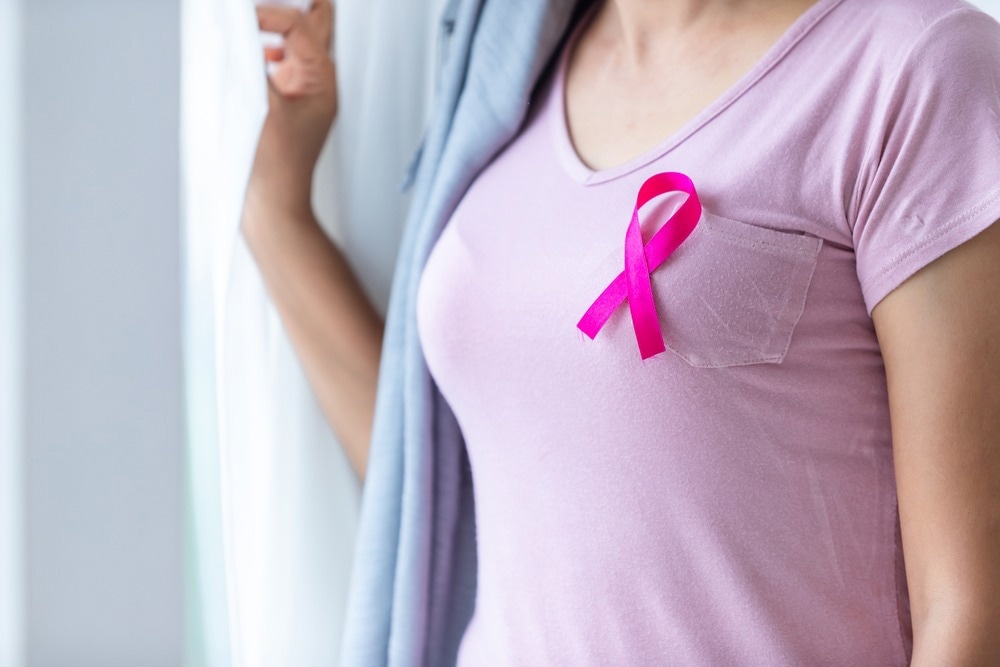In a recent study published in the journal JAMA Network Open, researchers evaluated the incidence of breast cancer among young women between the ages of 20 and 49 years. They assessed the incidence according to age at diagnosis, tumor stage, estrogen and progesterone hormone receptor status, and race and ethnicity.
 Study: Breast Cancer Incidence Among US Women Aged 20 to 49 Years by Race, Stage, and Hormone Receptor Status. Image Credit: Thinnapob Proongsak/Shutterstock.com
Study: Breast Cancer Incidence Among US Women Aged 20 to 49 Years by Race, Stage, and Hormone Receptor Status. Image Credit: Thinnapob Proongsak/Shutterstock.com
Background
In the United States (U.S.), breast cancer is not only the most common form of cancer diagnosed among women, but it is also associated with the highest rate of cancer-related mortality. Furthermore, breast cancer in younger women tends to be more aggressive, with advanced tumor stage and larger tumor size at diagnosis, as compared to that in older women.
Younger women with breast cancer also tend to have negative estrogen and progesterone receptor status and human epidermal growth factor receptor 2 (ERBB2) overexpression, which indicates poor prognosis.
Although recent research indicates that the incidence of breast cancer is increasing among younger women, women under the age of 40 are not eligible for breast cancer screening programs unless they are at high risk of the disease. Furthermore, there is a paucity of data on breast cancer incidence patterns according to race, cancer stages, and hormone receptor status. The influence of ecological and social environments on the incidence of breast cancer among younger women has also not been examined in the context of cohort or period effects.
About the study
In the present study, the researchers calculated the incidence of breast cancer among women between the ages of 20 and 49 over the last 20 years, with the analyses stratified according to age at diagnosis, tumor stage, estrogen, and progesterone receptor status, and race and ethnicity using data obtained from Surveillance, Epidemiology, and End Results Program.
Additionally, the researchers examined how unique ecological and social environments impact a population of individuals born in the same year, also known as cohort effects. The study also investigated the role of period effects, or the role of the environmental or social context of a specific calendar time in modifying the risk of breast cancer in young women.
The study population included women aged 20 to 49 years with a diagnosis of primary invasive breast cancer, unstaged or between I to IV stages, for whom information on race and ethnicity was available. The information about age at diagnosis was grouped into five-year age groups, which were then used to calculate the age-standardized breast cancer incidence rates. Additionally, data on hormone receptor status was used to classify the participants into four groups based on the combined receptor status for estrogen and progesterone receptors.
The data was also categorized for the various race and ethnic groups and the tumor stages. The primary outcome investigated in the study was the age-standardized incidence rates of breast cancer. Subgroup analyses were conducted to understand any heterogeneity in the incidence rates based on race and ethnicity. Incidence rate ratios were also computed to understand the differences in incidence between different racial or ethnic groups.
Results
The results showed an increase in the incidence of breast cancer among young women in the U.S., especially after 2016. The incidence rates were the highest among non-Hispanic Black women between the ages of 20 and 29 and 30 and 39 years. The findings also indicated that the incidence of tumors positive for estrogen receptors was on the rise while that of tumors negative for estrogen receptors was decreasing. Similarly, the incidence of tumors in stages I and IV was seen to be increasing, while that of tumors in stages II and III was decreasing.
The trends indicated that women from the non-Hispanic Black group also had a high incidence of advanced-stage breast cancer, potentially contributing to the high mortality rates among women of that racial and ethnic group. These results highlight the need for early assessment of breast cancer risk and targeted screening for breast cancer being recommended earlier for young non-Hispanic Black women.
Additionally, while the cohort effect explained a large portion of the increase in breast cancer incidence rates, period effects were also significant in most of the racial and ethnic groups. These findings indicated that intrinsic biological differences between races or ethnicities alone do not account for disparities in breast cancer incidence rates. Social environments could potentially play a significant role in determining the risk of breast cancer, and identification of these social factors could provide modifiable risk factors that can be addressed to prevent the disease.
Conclusions
Overall, the findings suggested that the incidence of breast cancer was increasing among women between the ages of 20 and 49, with young non-Hispanic Black women having the highest incidence rates. Cohort and period effects were observed to play a significant role, indicating the potential role of modifiable social or environmental risk factors.
Journal reference:
- Xu, S., Murtagh, S., Han, Y., Wan, F., & Toriola, Adetunji T. (2024). Breast Cancer Incidence Among U.S. Women Aged 20 to 49 Years by Race, Stage, and Hormone Receptor Status. JAMA Network Open, 7(1), e2353331–e2353331. https://doi.org/10.1001/jamanetworkopen.2023.53331 https://doi.org/10.1001/jamanetworkopen.2023.53331